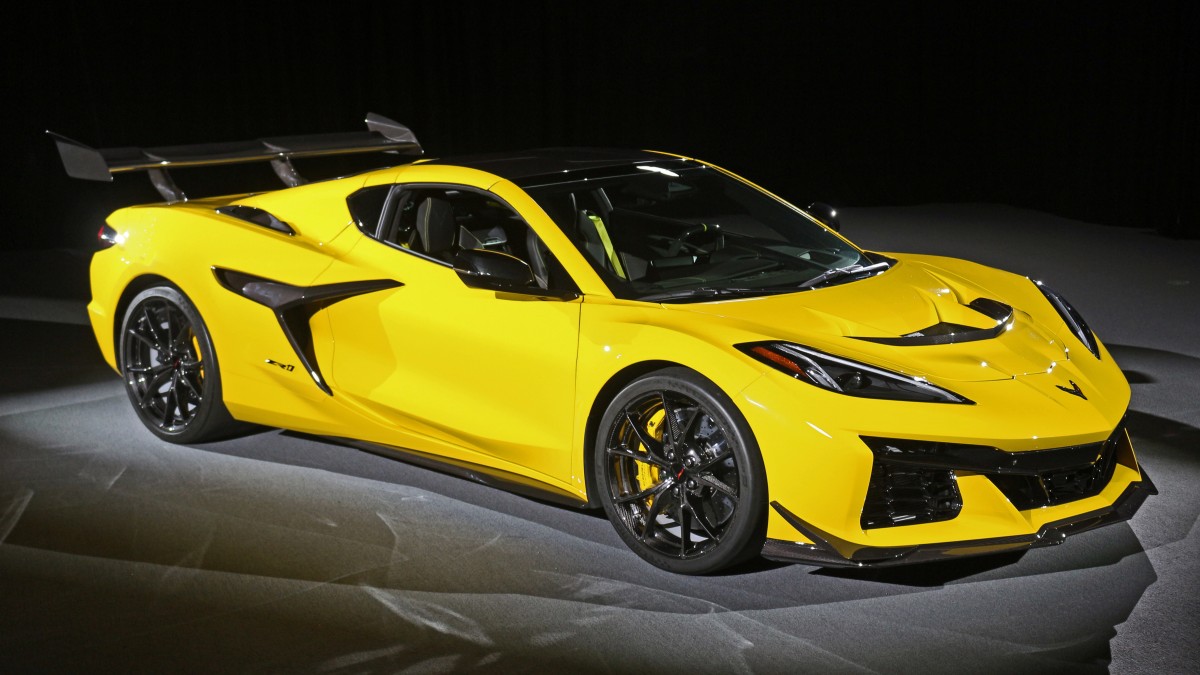
Almost four years ago, Chevy astonished the enthusiastic community with the most powerful naturally aspirated V8 ever installed in a production car. In 2024, GM Performance is back with another first: a turbocharged engine Corvette ZR1 With Over 1,000 Horsepower If you thought the Z06 was the ultimate performance Corvette, think again. This is not your grandpa’s ZR1.
First, let’s get the powertrain out of the way. The 2025 ZR1 is powered by GM’s new twin-turbo LT7 V8. This 5.5L engine shares its fundamental architecture with the Z06’s LT6. In this case, that means more than just a shared displacement. The LT7 also inherits the LT6’s flat-plane crankshaft — something from Ford The 5.2-liter “Voodoo” V8 was lost in the transition from the naturally aspirated GT350 to the supercharged GT500. Not so here. The single-scroll 76mm turbochargers feed enough air to the LT7 to produce 1,064 horsepower and 828 pound-feet of torque.
From there, power goes to the eight-speed dual-clutch transmission, which features stiffer input shafts (internal and external), stronger shot-peened gears and improved oil management for high-G loads. All told, GM says this combo is good for a top speed of more than 215 mph and a quarter-mile in under 10 seconds. There’s no official 0-to-60 time yet, but you can certainly expect it to be blazing fast, especially for a rear-wheel-drive machine.
What has changed between LT6 and LT7?
- Secondary port fuel injection
- New head castings with redesigned ports and a larger combustion chamber
- New valve timing and lift profile optimized for boost
- New piston/connecting rod design
- Completely new intake system
- Twin, ported shroud, ball bearing, mono-scroll (76 mm) turbochargers
- “Intelligent” anti-lag engine calibration
Nothing goes hand in hand with high-performance Corvettes like aggressive air management. In this case, we’re talking about both cooling and aerodynamic upgrades. A new “flow-through” hood design draws air in through the grille, where it passes through the intercooler and out through the hood. This improves both front-end downforce and charged-air temperatures, GM says. The ZR1 offers a smoother exterior and a small spoiler with adjustable wicks.
The front splitter, underwing (with gurney deflectors), and rocker moldings are part of the standard aero package. ZTK adds the crazy rear wing, front dive planes, and the hood gurney lip. Below that, strakes replace the underwing stall gurney to improve nose downforce. The ZR1’s sidewalls each house two air intakes (four total). One in each feeds one bank of the LT7 V8, while the other connects to a brake duct. There is also a new extractor vent on each side of the ZR1’s rear deck to pull heat out of the engine compartment.
GM’s Magnetic Ride Control 4.0 is responsible for managing the ZR1’s chassis, which is mated to 20-inch front and 21-inch rear wheels, wrapped in Michelin Performance tires (275/30ZR20 front; 345/25ZR21 rear). The standard package uses the Pilot Sport 4S, while ZTK models come with Pilot Sport Cup 2-Rs. The ZTK package also includes stiffer springs, but otherwise retains the MRC 4.0 setup from the base ZR1. Dry weight is listed as 3,670 pounds for the coupe and 3,758 pounds for the convertible; all of that carbon fiber yields dividends.
This is the last Corvette designed under the leadership of legendary Corvette engineer Tadge Juechter, and from what we’ve seen so far, it’s a sendoff he can be proud of. The 2025 ZR1 is scheduled to hit showrooms next year.
